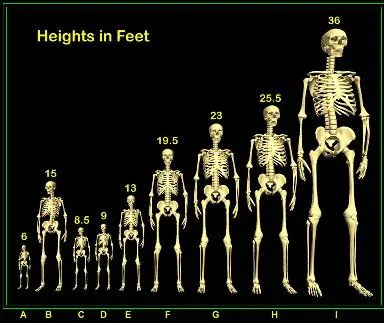‘White Giants’ in Legends: Indigenous Tales Unfold
Native American legends and traditions are filled with tales of supernatural beings, divinities, and mythical creatures that have been passed down through generations. Among these stories, one figure that has captured the imagination of many is that of the ancient race of “white giants.” These legends, while varying in detail and characteristics depending on the region and indigenous group, present a common theme: the existence of a race of giants that inhabited the Earth in ancient times.
Origins and Descriptions

The idea of white giants appears in various indigenous cultures of America, from the North to the South of the continent. In general, these giants are described as beings of great stature and imposing appearance, with white or pale skin. Descriptions vary, but they are often portrayed as tall, robust people with physical characteristics that stand out noticeably compared to those of ordinary humans.
In some legends, these giants are seen as an ancient race that existed long before present-day indigenous peoples. In other narratives, they are described as invaders or colonizers who came to indigenous lands, bringing with them changes and challenges for the native peoples.
Cultural and Symbolic Significance

For many indigenous communities, these stories about white giants are not just fantastic tales, but have deep cultural and symbolic meaning. Often, these giants represent a time of transformation or conflict in the ancestral history of the people. In some cases, white giants are believed to be responsible for catastrophic events or natural disasters that shaped the world as we know it.
The figure of giants can also symbolize the interaction between different cultures and the arrival of new groups on indigenous lands. Legends can reflect the experience of indigenous peoples in the face of historical invasions and colonizations, often interpreting these encounters as confrontations with powerful and unknown beings.
Research and Debates

The existence of a race of white giants in historical reality has been the subject of debate among scholars and researchers. Although some attempt to find physical or archaeological evidence to support these legends, most studies suggest that these stories are rather products of the collective imagination and cultural experiences of indigenous peoples.
Instead, researchers often focus on understanding the cultural and symbolic context of these narratives, exploring how they reflect perceptions of power, conflict, and change in indigenous societies. Stories of white giants are therefore interpreted as part of a rich tapestry of myths and legends that have helped shape the identity and worldview of indigenous peoples.
Conclusion
The ancient race of “white giants” in American Indian traditions is a fascinating example of how Native cultures have used myth and legend to understand their history and place in the world. While these stories may not have a literal historical basis, their value lies in the rich cultural narrative they offer, providing a window into the experiences and beliefs of Native peoples. By studying and respecting these legends, we can gain a greater appreciation for the depth and diversity of American Indian traditions.






